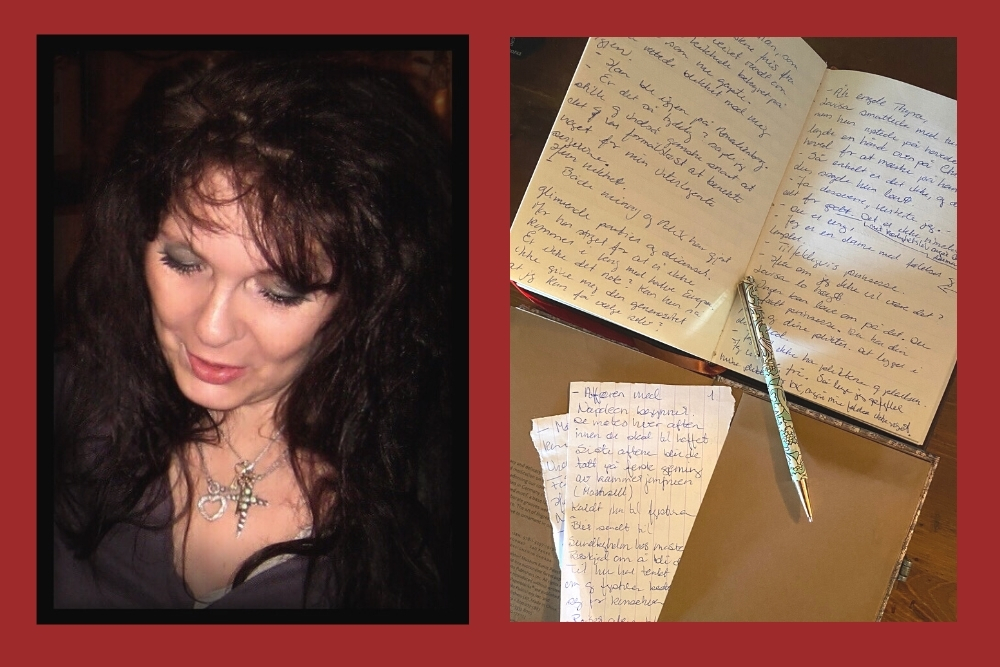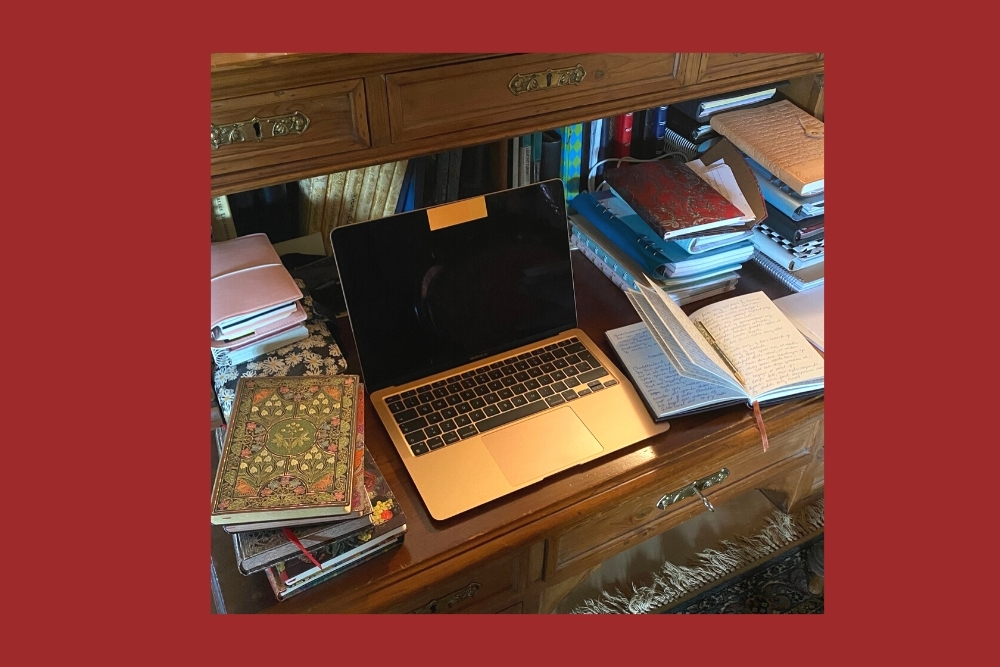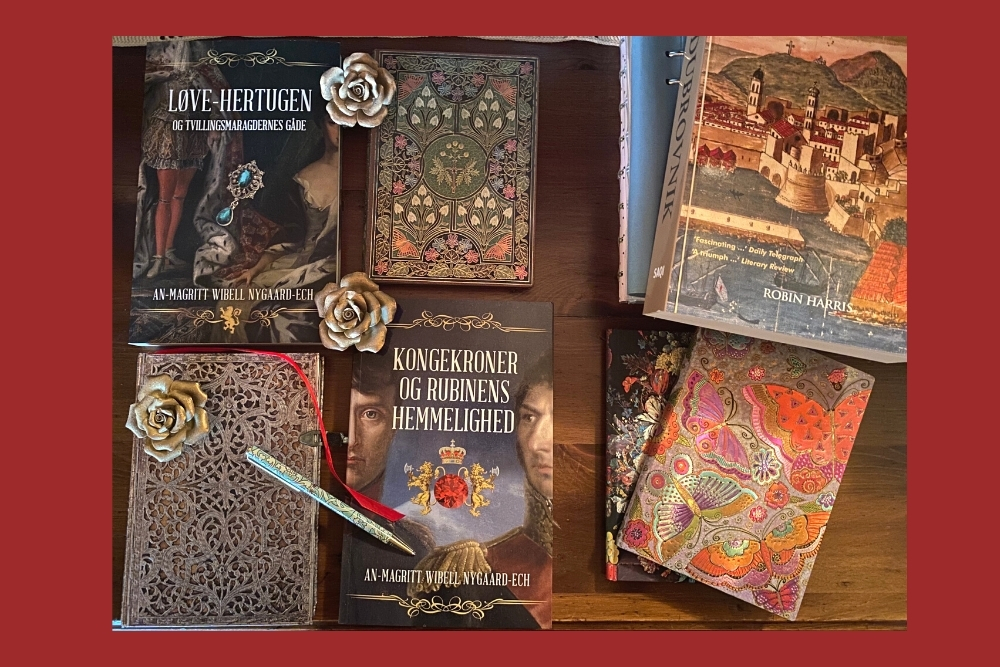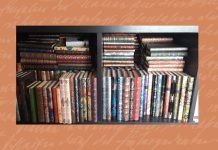Our Peek Inside… series takes a look inside people’s journals to celebrate their imagination and inspire others. This week we are happy to welcome An-Magritt Wibell Nygaard-Ech, an author, freelance writer and bestselling novelist in Denmark who uses her Paperblanks journals for all her first drafts. We had the pleasure of having her on our blog a few years ago for the 13 Questions With series, and we decided to do a follow-up with her to learn more about her latest novel and her creative process.
When and why did you start using Paperblanks notebooks?
I am not quite sure but it all started when someone gifted me a notebook around 2008. I quickly discovered the notebook was quite special. When I had written the last words on the last page, I realized I needed to get ahold of them. I discovered that it was not easy at all to find them in Denmark back then. So in the beginning, my family and friends picked up Paperblanks notebooks for me at airports and in bookstores in other places in Europe. They used to contact me every time they were going to travel, asking if I needed more Paperblanks. Then Norwegian bookstores started carrying them, and then it became easy. I started to ask my bookstore in Denmark to take them in – and that I think happened in 2016. I wrote my first book using them in 2009.

What aspect of Paperblanks notebooks appealed most to you?
It’s the size I use (Midi), and the paper quality which is so perfect to write on. It picks up the ballpoint pen easily and naturally, and lets it glide in my hand, even when I write fast. There are no ink spots or smears and the pen doesn’t leave any gliding marks. It’s like the paper is whispering “What do you want to tell me today?” when I open the notebook, stretching out to me as inspiration. It’s quite delicate to my creative thoughts. So, I start my story in the notebook first. The cover is so stylish and delicate, and I love to hold them in my hand, find a special spot to sit down, open the notebook and write. It gives me freedom – that’s important in the creation phase of the story writing. I can take the notebook with me, sit by the sea, make sketches of buildings and nature while writing outside. And then there’s the memento pouch in the back; I can put one of my many little paper notes in it, so they don’t disappear. I write down anything I need to remember when it jumps in my head. And believe me, I can take many little notes on paper, regardless of where I am: standing or sitting down at the time an idea, thought, or sentence pops into my mind.

We are thrilled to know you use Paperblanks for all your first drafts! Why do you prefer to do a first draft on paper rather than going straight to the computer?
Using the old fashioned method is freedom. I need that in my creating phase: to not feel locked in one place or one position. With a notebook I can move around, change positions, lie down and write – it depends. And it’s easy when sometimes, after I have gone to bed, I suddenly have a thought; it’s wonderful and simpler to stretch and reach for my Paperblanks and write there and then. A notebook and a pen are not static but movable, and they give me the feeling of something livable, which a PC does not provide. It’s cold, hard, and it creates distance at this point of the work. I create moving living characters, and the notebook provides and underscores that, with some authenticity. It’s also a way to save time, and to simplify the process in me and around me. A PC can disturb too much and destroy my focus, and closeness. For me this is necessary when crawling into my writing bubble and into another world as long as I work on a novel. I can simply not feel related to a machine when I try to create relationships with my characters. The notebook itself is inspiring. But, after this initial phase is finished, the PC is necessary to move over to. Then it is an important tool.

When it comes to editing, how critical of your work are you?
Very critical. And for that, it’s much easier to test and rewrite in a notebook. Even though it doesn’t look so smashing with corrections. But it also gives me an historic timeline on my writing that will stay forever. I can see what I initially wrote, erased, and didn’t like right then and there. That’s a part of the process too – to compare earlier notes. When you delete on a PC, it’s gone! And I can’t work with my first thoughts the same way and physically see and compare what looks good. Besides, it’s also important when it comes to the story itself, and the facts used.
I think every author has their own system that works for them. This is mine.

A few years ago, when we interviewed you for 13 Questions With, we were discussing your next novel, The Gift of the Ocean. We understand you recently signed a contract with a Danish publisher to get it published in 2022 (congratulations!). Can you tell us more about this experience from concept to getting the book published?
Usually the novel is planned by me. Meaning, I choose the time period, the characters, and the events I’ll write about. Then the research starts. This novel came to me: at first it tumbled in my head and did not want to leave. It was fragments. But then, a very brave person changed that and I understood what the story was about. The Gift of the Ocean forced me to pay attention. So I did and opened up. After finally feeling ready and sending a synopsis to my editor at SuperLux, she took it in, which I am incredibly grateful and humble about. To have an editor who believes in the story, obligates but also inspires me to work extra hard. The story indeed deserves to be treated with respect and hard work.
I also would like to take this opportunity to express my gratitude to my editor at the publishing company forfatterskabet.dk. They are behind my historical novels Kings Crown and the Secret of the Ruby and The Lion-Duke and the Mystery of the Twin Emerald.

Our Peek Inside… series takes a look inside people’s journals to celebrate their imagination and inspire others. Please send us an email if you have a project that you would like to be featured.





